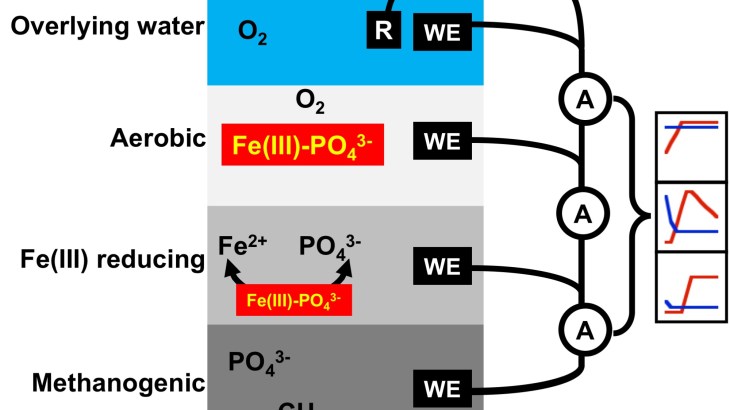How To Apply
Interested in participating in this research project? Contact the professor or graduate student listed below.
Professors
John Senko, Associate Professor (Geosciences and Biology) | senko@uakron.edu
Chelsea Monty, Associate Professor (Chemical Biomolecular, and Corrosion Engineering) | cm78@uakron.edu
Project Description
Release of phosphate-P immobilized in benthic sediments poses a remnant threat to induce harmful algal blooms (HAB) despite adequate management of external loads of phosphate. This process, referred to as internal loading of P, is induced by microbially mediated alternations of sediment and porewater chemistry and bacteria that “breath” iron are mostly responsible for controlling the release of P from sediments. We have developed an electrochemical split-chamber zero resistance ammetry (SC-ZRA) technique that we can use to detect microbiological activities. The SC-ZRA approach entails deployment of electrically connected working electrodes two chambers that are separated by an ion-permeable membrane and we can use a similar setup to detect activities in lake sediments. ZRA-based monitoring can determine extents and types of microbial metabolism in the sediments, be exploited for long-term stewardship of phosphate-loaded sediments, and serve as an “early-warning system” for internal phosphate loading events. This approach could be an easily deployable, low power, high resolution, and inexpensive way to monitor microbial activities in benthic sediments.
Project Dates
Spring 2020 – Spring 2021
Search Terms
Chemistry, Ecology / Environmental Studies, Microbiology, Sustainability, For Credit, Non-Credit, Funded, Non-Funded, STEM
